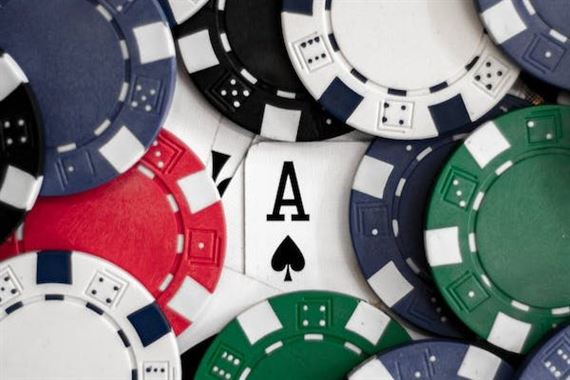Introduction:
Using mathematics in poker is a practical approach that can significantly improve your gameplay and decision-making abilities. By understanding and applying mathematical concepts, you can gain an edge over your opponents and make more informed choices at the poker table. This practical guide will provide you with an overview of how to use mathematics in poker, including key mathematical concepts, strategies, and calculations that can enhance your overall performance. Whether you are a beginner or an experienced player, incorporating mathematics into your poker game can help you make better decisions and increase your chances of success.
The Importance of Probability in Poker: Enhancing Your Decision-Making Skills
Poker is a game that combines skill, strategy, and a little bit of luck. While many players rely on their instincts and gut feelings, incorporating mathematics into your poker game can greatly enhance your decision-making skills. One of the most important mathematical concepts in poker is probability.
Probability is the branch of mathematics that deals with the likelihood of events occurring. In poker, understanding probability can help you make more informed decisions and increase your chances of winning. By calculating the probability of certain outcomes, you can determine the best course of action in any given situation.
One of the first things to consider when using probability in poker is the concept of outs. Outs are the cards that can improve your hand and potentially lead to a winning combination. By calculating the number of outs you have, you can determine the probability of hitting one of those cards on the next street.
For example, let’s say you have a flush draw after the flop. There are nine cards of the same suit remaining in the deck, so you have nine outs. With 47 unknown cards, the probability of hitting your flush on the turn is approximately 19%. If you don’t hit your flush on the turn, the probability of hitting it on the river increases to around 38%.
Understanding the concept of outs and calculating the probability of hitting them can help you make better decisions when it comes to calling, raising, or folding. If the pot odds are in your favor, meaning the potential payout is greater than the probability of hitting your outs, it may be a good idea to continue playing. On the other hand, if the pot odds are against you, it may be wiser to fold and wait for a better opportunity.
Another important aspect of probability in poker is understanding the concept of expected value (EV). Expected value is a mathematical calculation that represents the average amount of money you can expect to win or lose in a particular situation over the long run.
To calculate the expected value, you need to consider the probability of each possible outcome and the potential payout associated with each outcome. By comparing the expected value to the cost of participating in a hand, you can determine whether it is a profitable decision in the long run.
For example, let’s say you are faced with a decision to call a bet on the river. The pot is $100, and your opponent bets $50. You estimate that you have a 25% chance of winning the hand. To calculate the expected value, you multiply the probability of winning (25%) by the potential payout ($150, which includes the pot and your opponent’s bet). The expected value in this situation is $37.50.
If the cost of calling the bet is less than the expected value, it may be a profitable decision to call. However, if the cost is greater than the expected value, it would be wiser to fold.
Incorporating probability into your poker game can greatly enhance your decision-making skills and increase your chances of winning. By understanding the concept of outs and calculating the probability of hitting them, you can make more informed decisions when it comes to calling, raising, or folding. Additionally, by considering the expected value of each decision, you can determine whether it is a profitable move in the long run. So, the next time you sit down at the poker table, remember to bring your mathematical skills along for the ride.
Mastering Poker Mathematics: Calculating Pot Odds and Expected Value
Poker is a game of skill, strategy, and calculation. While luck plays a role, it is the players who understand and utilize mathematics who have the upper hand. In this practical guide, we will explore the importance of mastering poker mathematics, specifically focusing on calculating pot odds and expected value.
Pot odds are a fundamental concept in poker. They represent the ratio of the current size of the pot to the cost of a contemplated call. By calculating pot odds, players can determine whether a particular bet or call is profitable in the long run. To calculate pot odds, one must compare the potential reward to the risk involved.
For example, let’s say the pot contains $100, and your opponent bets $20. To calculate the pot odds, divide the size of the pot ($100) by the cost of the call ($20). In this case, the pot odds are 5:1. This means that for every $1 you invest, you stand to win $5. If the probability of winning is greater than 20%, it would be a profitable call.
Expected value (EV) is another crucial concept in poker mathematics. It represents the average amount a player can expect to win or lose on a particular bet over the long run. By calculating the expected value, players can make informed decisions based on the potential profitability of a bet.
To calculate the expected value, multiply the probability of winning by the amount you stand to win and subtract the probability of losing multiplied by the amount you stand to lose. If the expected value is positive, it indicates a profitable bet, while a negative expected value suggests an unprofitable one.
For instance, let’s say you have a flush draw with nine outs (cards that will complete your hand) and the pot is $100. Your opponent bets $20, and you must decide whether to call. The probability of hitting your flush on the next card is approximately 19%. If you hit your flush, you will likely win the pot, which is $120. If you miss, you will lose your $20 call. By calculating the expected value, you can determine whether the call is profitable.
To calculate the expected value, multiply the probability of winning (19%) by the potential reward ($120) and subtract the probability of losing (81%) multiplied by the potential loss ($20). In this case, the expected value is positive, indicating a profitable call.
Mastering poker mathematics requires practice and a deep understanding of probability theory. It is essential to be able to quickly calculate pot odds and expected value during a game. By doing so, players can make informed decisions and maximize their chances of winning.
Transitional phrases such as “For example,” “In this case,” and “To calculate” help guide the reader through the concepts being discussed. These phrases provide clarity and ensure a smooth flow of ideas.
In conclusion, mastering poker mathematics is crucial for any serious player. Calculating pot odds and expected value allows players to make informed decisions and maximize their profitability. By understanding these concepts and practicing their application, players can gain a significant advantage at the poker table. So, next time you sit down to play, remember to bring your mathematical skills along with your poker face.
Using Statistics to Analyze Poker Hands: Gaining an Edge in the Game
Poker is a game of skill, strategy, and a little bit of luck. While many players rely on their instincts and experience to make decisions at the poker table, there is another tool that can give you an edge in the game: mathematics. By using statistics to analyze poker hands, you can gain valuable insights into the probabilities and potential outcomes of each hand, allowing you to make more informed decisions and increase your chances of winning.
One of the first things to consider when using statistics in poker is the concept of hand ranges. A hand range is a range of possible hands that your opponent could have based on their actions and the cards that have been revealed. By analyzing the statistics of different hand ranges, you can make more accurate predictions about the strength of your opponent’s hand and adjust your own strategy accordingly.
To analyze hand ranges, you can use a variety of statistical tools and techniques. One common approach is to use a poker tracking software, which records and analyzes data from your previous poker sessions. These tools can provide you with valuable information about your opponents’ tendencies, such as their pre-flop raise percentage or their aggression factor. By studying these statistics, you can gain insights into their playing style and adjust your own strategy accordingly.
Another important statistical concept in poker is pot odds. Pot odds refer to the ratio of the current size of the pot to the cost of a contemplated call. By calculating the pot odds, you can determine whether it is mathematically profitable to make a particular call or not. For example, if the pot is $100 and your opponent bets $20, you would need to win at least 20% of the time in order for the call to be profitable. By comparing the pot odds to the odds of completing your hand, you can make more informed decisions about whether to call, raise, or fold.
In addition to hand ranges and pot odds, another statistical concept that can be useful in poker is expected value (EV). EV is a measure of the average amount of money you can expect to win or lose on a particular decision over the long run. By calculating the EV of different actions, you can determine which decision is the most profitable in the long term. For example, if you have a 50% chance of winning $100 and a 50% chance of losing $50, the EV of the decision would be $25. By making decisions with positive EV, you can increase your overall profitability in the game.
While statistics can be a powerful tool in poker, it is important to remember that they are just one piece of the puzzle. Poker is a complex game that requires a combination of skill, strategy, and intuition. While statistics can help guide your decision-making process, they should not be the sole determining factor. It is important to consider other factors such as your opponents’ playing style, table dynamics, and your own instincts when making decisions at the poker table.
In conclusion, using statistics to analyze poker hands can give you a valuable edge in the game. By understanding hand ranges, pot odds, and expected value, you can make more informed decisions and increase your chances of winning. However, it is important to remember that statistics are just one tool in your poker arsenal. To truly excel at the game, you must also develop your skills, strategy, and intuition. So, the next time you sit down at the poker table, don’t forget to bring your mathematical mindset along for the ride.
Applying Game Theory to Poker: Strategies for Optimal Decision Making
Applying Game Theory to Poker: Strategies for Optimal Decision Making
Poker is a game of skill, strategy, and calculated risks. While luck plays a role, it is the players who understand the underlying mathematics and apply game theory who consistently come out on top. In this article, we will explore how you can use mathematics to improve your poker game and make more informed decisions at the table.
One of the fundamental concepts in game theory is the idea of expected value (EV). EV is a mathematical calculation that helps you determine the potential profitability of a particular decision. In poker, every decision you make has an associated EV, which can be positive or negative. By understanding and calculating the EV of different actions, you can make more informed decisions that maximize your long-term profitability.
To calculate the EV of a decision, you need to consider two factors: the probability of each possible outcome and the potential payoff or loss associated with each outcome. For example, let’s say you are considering whether to call a bet on the river. You estimate that there is a 30% chance your opponent has a better hand and a 70% chance you have the best hand. If you call and win, you will win $100, but if you call and lose, you will lose $200. By multiplying the probabilities by the potential payoffs or losses and summing them up, you can calculate the EV of calling the bet. In this case, the EV would be ($100 * 0.7) – ($200 * 0.3) = $10. This means that, on average, calling the bet would result in a $10 profit.
Understanding EV is crucial, but it is not the only mathematical concept that can help you make better decisions in poker. Another important concept is pot odds. Pot odds help you determine whether it is mathematically correct to call a bet based on the size of the pot and the size of the bet. To calculate pot odds, you divide the size of the bet by the total size of the pot (including the bet). If the pot odds are higher than the odds of completing your hand, it is mathematically correct to call the bet. For example, if the pot is $100 and your opponent bets $20, the pot odds would be 20/120, or 1/6. If the odds of completing your hand are 1/5, it would be mathematically correct to call the bet.
In addition to EV and pot odds, understanding the concept of equity can also give you an edge in poker. Equity is a measure of your share of the pot based on your chances of winning the hand. By calculating your equity, you can determine whether it is profitable to continue in a hand or fold. For example, if you have a flush draw with nine outs (cards that will complete your hand), you have approximately a 35% chance of completing your hand by the river. If the pot is $100 and your opponent bets $20, your equity would be 35% of $120, or $42. If the cost to call the bet is less than your equity, it would be profitable to continue in the hand.
In conclusion, applying game theory and mathematics to poker can significantly improve your decision-making skills and profitability at the table. By understanding concepts such as expected value, pot odds, and equity, you can make more informed decisions that maximize your long-term profitability. While luck will always play a role in poker, it is the players who understand and apply these mathematical principles who consistently come out on top. So, the next time you sit down at the poker table, remember to let mathematics be your guide.
Bankroll Management in Poker: Using Mathematics to Protect Your Funds
Bankroll Management in Poker: Using Mathematics to Protect Your Funds
Poker is a game that combines skill, strategy, and a little bit of luck. While many players focus on honing their poker skills and developing winning strategies, one aspect that is often overlooked is bankroll management. Proper bankroll management is crucial for any serious poker player, as it helps protect your funds and ensures that you can continue playing even during a losing streak. In this article, we will explore how mathematics can be used to effectively manage your poker bankroll.
The first step in bankroll management is determining the size of your bankroll. This is where mathematics comes into play. To calculate the ideal bankroll size, you need to consider two important factors: your win rate and your risk tolerance. Your win rate is the average amount of money you expect to win per hour of play, while your risk tolerance is the amount of money you are willing to lose without it affecting your daily life.
To calculate your ideal bankroll size, you can use a simple formula: bankroll = (win rate * standard deviation) / acceptable risk of ruin. The standard deviation measures the volatility of your results, while the acceptable risk of ruin is the probability of losing your entire bankroll. By plugging in these values, you can determine the appropriate size for your bankroll.
Once you have determined the size of your bankroll, the next step is to set limits for your buy-ins and bets. Again, mathematics can help you make informed decisions. One common rule of thumb is to limit your buy-in to 5% of your bankroll. This ensures that even if you have a bad run of luck, you still have enough funds to continue playing.
Similarly, setting limits for your bets is crucial. The Kelly Criterion is a mathematical formula that can help you determine the optimal bet size based on your bankroll and the odds of winning. It takes into account both the potential reward and the risk involved. By using the Kelly Criterion, you can maximize your potential winnings while minimizing the risk of going broke.
Another important aspect of bankroll management is knowing when to move up or down in stakes. This decision should be based on your bankroll size and your win rate. As a general rule, you should have at least 20 buy-ins for the next stake level before moving up. Conversely, if your bankroll drops below a certain threshold, it may be wise to move down in stakes to protect your funds.
In addition to these mathematical strategies, it is also important to practice discipline and self-control. It can be tempting to chase losses or play at higher stakes than your bankroll allows, but this can quickly lead to financial ruin. By sticking to your bankroll management plan and making decisions based on mathematics rather than emotions, you can protect your funds and increase your chances of long-term success in poker.
In conclusion, bankroll management is a crucial aspect of poker that is often overlooked. By using mathematics to determine the size of your bankroll, set limits for your buy-ins and bets, and make informed decisions about moving up or down in stakes, you can protect your funds and increase your chances of success. Remember, poker is a game of skill, strategy, and a little bit of luck, but with proper bankroll management, you can tilt the odds in your favor.
Advanced Mathematical Concepts in Poker: Exploring Range Analysis and Equity Calculations
Advanced Mathematical Concepts in Poker: Exploring Range Analysis and Equity Calculations
Poker is a game of skill, strategy, and calculation. While many players rely on their instincts and experience, incorporating advanced mathematical concepts can give you a significant edge at the poker table. In this article, we will delve into two essential mathematical concepts in poker: range analysis and equity calculations.
Range analysis is the process of assigning a range of hands to your opponents based on their actions and the information available. By analyzing the range of hands your opponents could have, you can make more informed decisions and adjust your strategy accordingly. This concept requires a deep understanding of probability and statistics.
To perform range analysis, you need to consider various factors, such as the player’s position, their betting patterns, and the community cards on the table. By combining these factors with your knowledge of the game and your opponents’ tendencies, you can narrow down their possible hand ranges. This information allows you to make more accurate decisions, such as whether to bet, call, or fold.
Equity calculations are another crucial mathematical concept in poker. Equity refers to the share of the pot that belongs to a player based on their chances of winning the hand. By calculating your equity, you can determine the profitability of a particular decision.
Equity calculations involve estimating the probability of winning the hand at different stages of the game. This estimation requires a solid understanding of combinatorics and probability theory. By considering the possible outcomes and the likelihood of each, you can assign a numerical value to your equity.
Equity calculations are particularly useful when deciding whether to continue in a hand or fold. If your equity is higher than the pot odds, it is mathematically profitable to continue playing. Conversely, if your equity is lower than the pot odds, folding would be the optimal decision.
To calculate equity, you can use various tools and software available online. These tools consider factors such as your hand, the community cards, and your opponents’ likely ranges. By inputting this information, you can obtain an accurate estimate of your equity and make more informed decisions.
While range analysis and equity calculations are powerful tools, they require practice and experience to master. It is essential to develop a solid foundation in probability and statistics to apply these concepts effectively. Additionally, observing and analyzing your opponents’ actions and tendencies will help refine your range analysis skills.
To improve your mathematical prowess in poker, consider studying books and articles on the subject. Many renowned poker players have written extensively on the mathematical aspects of the game, providing valuable insights and strategies. Additionally, joining online poker forums and discussing hands with experienced players can help you gain a deeper understanding of these concepts.
In conclusion, incorporating advanced mathematical concepts in poker can significantly enhance your gameplay. Range analysis and equity calculations allow you to make more informed decisions and increase your profitability at the poker table. By developing a solid understanding of probability, statistics, and combinatorics, you can gain a competitive edge and become a more successful poker player. So, sharpen your mathematical skills, practice diligently, and watch your poker game reach new heights.In conclusion, using mathematics in poker can greatly enhance a player’s chances of success. By understanding probability, expected value, and pot odds, players can make more informed decisions and improve their overall strategy. Additionally, mathematical concepts such as combinatorics and game theory can provide valuable insights into opponents’ likely actions and help players make optimal choices. By incorporating mathematics into their poker game, players can gain a competitive edge and increase their chances of winning in the long run.



